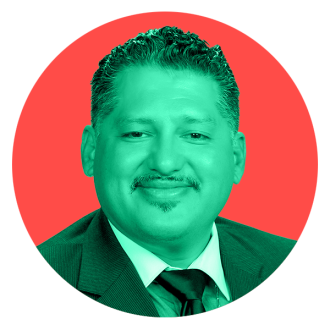From restaurant closures to empty grocery-store shelves, it’s obvious that the food system has been taking a hit in the new global reality of COVID-19. This pandemic has exposed the fact that many of our country’s food supply-chain workers have zilch in the way of a safety net. Meanwhile, without schools and restaurants to supply to, many farms are having trouble pivoting to new markets, while many farmworkers lack basic protections to carry out their essential work. Put simply: It’s a mess.
Of course, there are also bright spots. Acclaimed chefs like José Andrés of World Central Kitchen are preparing thousands of free or low-cost meals for communities in need. Locals in places like the San Francisco Bay Area are sewing masks for nearby farmworkers. And “victory gardens” are starting to come back in vogue.
What’s still unclear is how the long-term economic fallout from the pandemic and subsequent shifts in consumer behavior will affect our many-tentacled food system in the months and years to come. So we went to the experts: chefs, farmers, food activists, rural community leaders, and academics.
Here’s what food-focused Fixers Anthony Myint, Shane Bernardo, Liz Carlisle, Rey León, and Leah Penniman had to say about how the pandemic is affecting us, from farm to table to community, and what the path forward might look like.
The following responses have been edited for length and clarity.
Survival today, sustainability tomorrow

Anthony Myint: Chef, activist, and cofounder of Zero Foodprint in San Francisco
Let’s start with the bad news: COVID-19 has been devastating for our food system in general. Since so many workers on farms, at grocery stores, and at restaurants are low-income, the whole sector is disproportionately impacted. That represents a lot of people. One out of 10 workers in the U.S. are employed by restaurants and cafeterias, and that doesn’t even include farms and retail. Many small businesses will not have the savings or the kind of credit needed to reopen, and when things do reopen, there may not be anywhere near the traffic or revenue needed to sustain business.
So we expect there will definitely be a recession in the hospitality sector. But on the other hand, the restaurants that do survive may individually be better off — say, if demand falls 20 percent and supply falls 30 percent (because a lot of restaurants don’t reopen).
I think it’s a more important time than ever to talk about sustainability in the food system. But not the usual approach (eat less factory-farmed meat and waste less food). The new approach has to be around changing the way we farm and focusing on healthy soil, which would reduce the risk of fire, drought, flood, and chronic disease from nutrient deficiency, as well as conserve water, remove carbon from the atmosphere, and create better-tasting ingredients. It would be along the same lines as converting patches of the energy grid to renewables, only for acres of farmland.
Rethinking local food systems from the ground up

Shane Bernardo: Cofounder of Food as Healing in Detroit
This pandemic has exposed the precariousness of our relationship to an extractive, market-based economy that relies on the exploitation of our labor and our planet. For instance, food workers in the gig economy have been left to fend for themselves working jobs that pay them low wages with little to no benefits to protect them. These are frontline workers! They have become critical to our survival because of our dependence on a system that extracts as much profit as it can by exploiting its workforce and our natural resources.
The best way we can address food insecurity and address long-term consequences of the pandemic is by creating hyper-local responses that are rooted in mutual aid, collaboration, and a sense of shared risk and autonomy. We need to think in broader, holistic terms that don’t recreate the violence of the industrial food system. We have an opportunity to create a paradigm shift right in our own neighborhoods, and it all starts within ourselves, our relationships with one another and the land.
My work around growing food, healing, and cultural organizing has become even more prominent as the need for physical, emotional, and spiritual sustenance has increased along with the level of anxiety and uncertainty that this pandemic and its mismanagement has brought on. I tend to focus on growing food as a way of building and maintaining relationships with the Earth and people around me in my community. It’s within these connections that we start to feel stable, safe, and whole.
An opportunity to invest in a more sustainable food economy

Liz Carlisle: Assistant professor in the Environmental Studies Program at University of California, Santa Barbara
It’s very clear right now that we are making a public choice about what kind of economy we’re going to invest in. This is a chance to invest in an economic stimulus and economic recovery that is equitable and sustainable from its very root. Are we going to bail out large, concentrated supermarket chains? Or are we going to really invest in the viability of small farms, agroecological practices, networks of small businesses, and regional food economies? We have that opportunity now — when we’re just kind of fighting over incremental amounts of funding in a typical cycle of year-to-year legislative process, we tend to be looking more at nickels and dimes. Now we’re really looking at trillions of dollars.
In terms of what happens next, there’s a huge spectrum of possibility here. We could become more vulnerable to future shocks if we don’t learn these lessons. And there is the potential for even deeper concentration in our food system if small, family-run restaurants close — because the restaurants that are best positioned to survive are large chains that have these store houses of capital. That’s something of great concern.
On the positive side, we might see an acknowledgement, now that farmworkers and grocery-store workers have been formally declared essential workers in this time of coronavirus. These are workforces that have been left out of bedrock labor legislation since the New Deal. Perhaps going forward, we will actually come to see these workforces as essential, and we’ll treat them as such.
Growing appreciation for where food comes from

Rey León: Mayor of Huron, California
I live in a tiny farming town where 98 percent of residents are Latino and 44 percent live in poverty. What I’ve noticed is that farmworkers don’t have masks here. It would be great if their employers could provide them with personal protective equipment as they continue performing their essential duties necessary to feed the country. I would really love to see the farmworkers being protected, being provided with the appropriate equipment. That doesn’t seem to be happening right now.
That being said, it’s important that non-farming communities are now thinking about where their food comes from as a result of the pandemic. Some people seem to be thinking about how to be more independent in the way they eat — after all, depending on meat from across the country is showing to not be so resilient, not so sustainable. Maybe nature wants us to kind of step away from so much milk and so much meat, and eat more veggies and probably plant our own gardens.
Our communities, I think, should take the lesson on this one, to grow a network of community gardens where we can start learning how to be more resilient in times like this. I hope that this experience gets us more on that route, and not on the route of conspiracy and fear and mistrust.
Drawing on our roots, planting justice

Leah Penniman: Farm manager and codirector of Soul Fire Farm in Petersburg, New York
(Contributions from the whole Soul Fire Farm team, including Lytisha Wyatt and Larisa Jacobson, are below.)
At Soul Fire Farm we believe that “to free ourselves we must feed ourselves,” and the challenges the COVID-19 outbreak is posing to our communities exemplify the need for collective food sovereignty.
The stakes are high: Before, during, and after the outbreak, food apartheid continues, and will continue, to disproportionately impact black, indigenous, and people-of-color communities that also face higher vulnerability to COVID-19 due to factors like shared housing, lack of access to health care, environmental racism, job layoffs, immigration status, employment in the wage economy without worker protections, and more. The emergency food system is struggling to keep up with increased demand as more people experience loss of income, while food banks and food pantries are receiving fewer donations from grocery stores. Individuals and families who are limited to WIC and SNAP-designated food purchases — and do not have the space or financial resources to stockpile food — may be experiencing more acute food insecurity. Folks who rely on free- and reduced-lunch programs are also at risk with schools and other institutions closed indefinitely.
But there are steps we can take to help. In addition to systems and policy change, home and community gardening can help fill gaps in food access while bolstering longer-term community food sovereignty. Black, indigenous, and people-of-color-led organizations and communities have a rich history of growing food through provision gardens — we see this work as a continuation of that legacy.
To meet some of the needs of our community members we are offering materials, labor, and guidance to support folks in establishing upwards of 34 raised-bed gardens this spring. We’ve been collaborating with Northeast Farmers of Color Land Trust, Black Farmer Fund, HEAL Food Alliance, and the Castanea Fellowship to host bimonthly virtual skill-shares. These meetings catalyzed the creation of the Food & Land Sovereignty Resource List for COVID-19.



